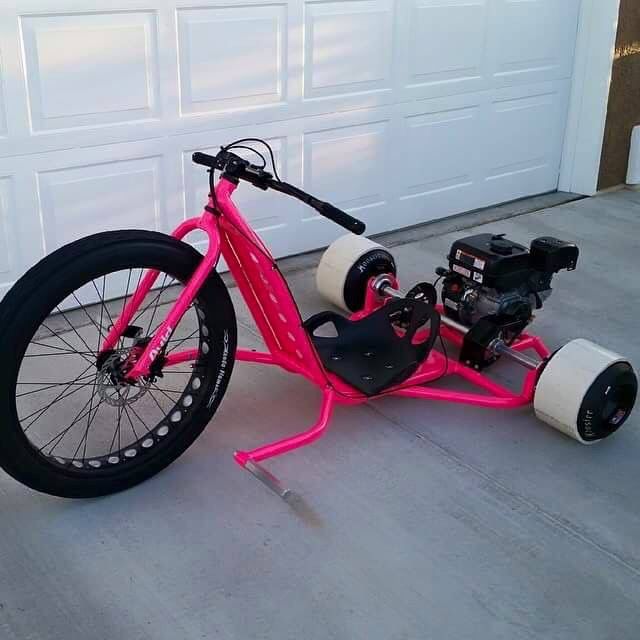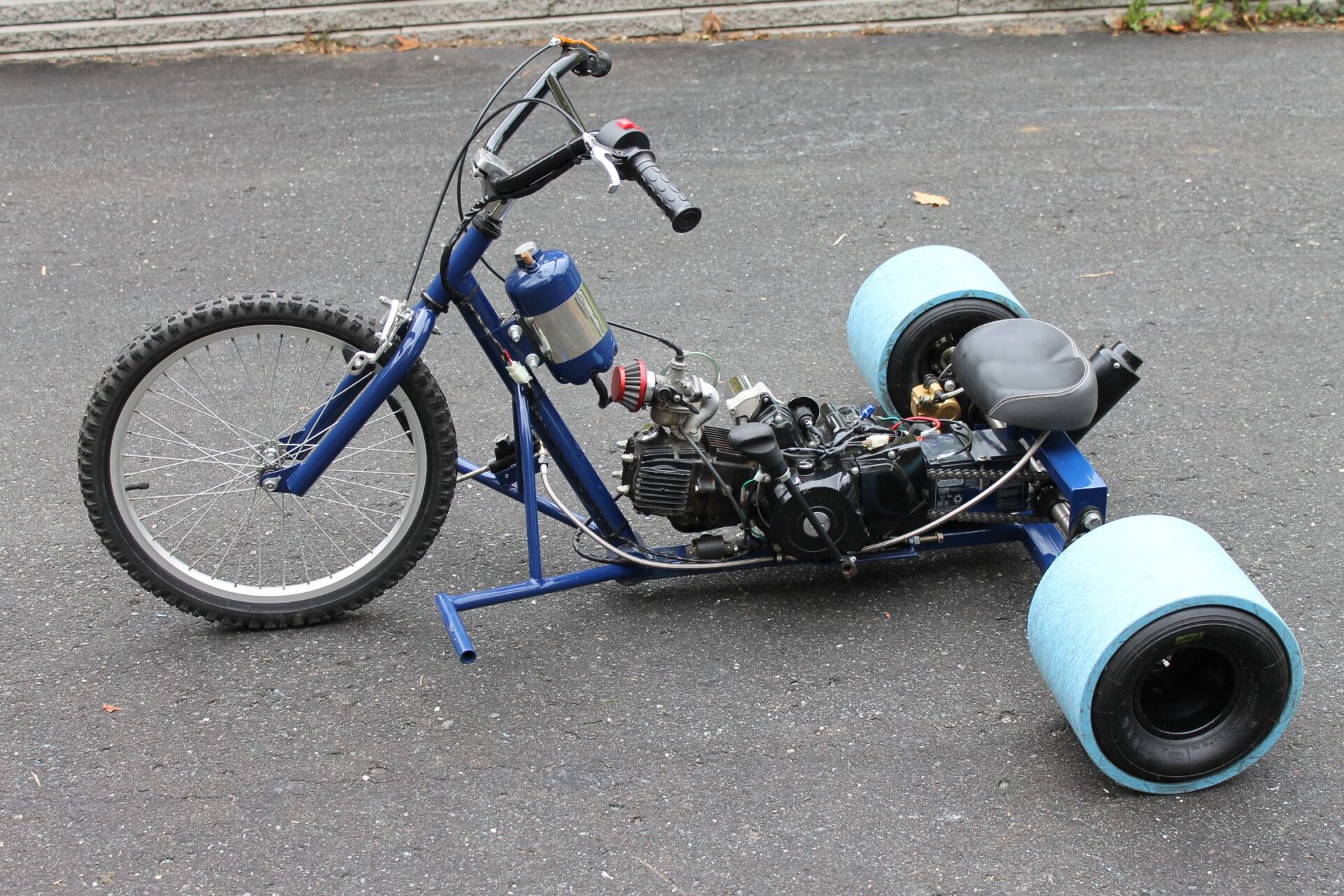When it comes to the exhilarating world of drift-triking, having a solid drift-trike frame is essential for a smooth and controlled ride. The frame is the backbone of your drift trike, providing stability, support, and control as you navigate tight corners and perform thrilling drifts. This blog post will explore the importance of a well-built drift trike frame and how it can enhance your overall riding experience.
Understanding the Basics of a Drift-Trike Frame
At the heart of every drift trike lies the frame, a fundamental component that brings cohesion to the ensemble of wheels, seating, handlebars, and pedalling mechanism. This structural core is pivotal for ensuring the rider can execute drifts and navigate precisely.
A frame meticulously designed will exhibit a low centre of gravity, a crucial aspect for superior handling and control during drifts. The frame accommodates the rigours of drifting, providing a sturdy yet flexible base that adapts to the dynamic movements and shifts in weight distribution inherent in the sport.
Opting for a frame with the right attributes can significantly influence the trike’s responsiveness and stability, enabling riders to push the limits of their drifting capabilities while maintaining a seamless connection with the road. In essence, the drift-trike frame is not just a skeleton but the very foundation that defines the drift trike’s character and performance on the track.
Materials Matter: Choosing the Right Frame Composition
Selecting the appropriate material for your drift-trike frame is a pivotal decision that directly influences your trike’s durability and manoeuvrability. Aluminium stands out for its remarkable blend of strength and lightness, offering riders a resilient and agile frame. Its corrosion resistance also makes it a favoured choice for those seeking longevity in their trike’s structure. On the other hand, steel is renowned for its formidable durability and capacity to absorb vibrations, providing a smoother ride on rough surfaces.
However, it’s heavier than aluminium, which could impact the trike’s nimbleness and acceleration. Emerging as a contender in the realm of high-performance trikes, carbon fibre frames are celebrated for their exceptional strength-to-weight ratio. This material enables the construction of frames that are not just lightweight but also incredibly rigid, translating to enhanced responsiveness and speed. Despite these benefits, carbon fibre’s cost and sensitivity to impact are considerations for riders prioritising budget and rugged use.
Design Innovations in Modern Drift-Trike Frames
In the evolving landscape of drift-triking, design innovations play a pivotal role in advancing frame technology. Modern drift-trike frames have revolutionised by integrating cutting-edge engineering practices and materials, enhancing the rider’s experience and trike performance. One notable innovation is the adoption of modular frame designs, enabling riders to customise and adjust components like seat position, handlebar height, and wheelbase length with unparalleled ease.
This modularity allows for a personalised setup and facilitates quick adjustments to suit different riding styles and conditions. Another significant development is using computer-aided design (CAD) tools and finite element analysis (FEA) in frame construction. These technologies enable designers to simulate and analyse stress distribution and the impact of forces on the frame, leading to optimised designs that balance strength, flexibility, and weight more effectively than ever before.
Such precision-engineered frames offer enhanced durability and performance, especially in the demanding situations encountered during competitive drift-triking. Moreover, the emergence of 3D printing technologies has opened new horizons for frame design. With 3D printing, complex geometries and customised parts that were previously impossible or too costly to produce using traditional manufacturing methods can be created.
The Impact of Frame Geometry on Drift-Trike Handling
A drift-trike’s frame geometry configuration is pivotal in defining the trike’s behaviour on the road, impacting its handling characteristics significantly. Various aspects, such as the length of the frame, the distance between wheels (wheelbase), and the angulation of the forks, are instrumental in determining the trike’s stability, agility, and overall responsiveness.
A longer wheelbase offers enhanced stability at higher speeds, making it ideal for those prioritising a smooth ride over sharp, quick turns. Conversely, a shorter wheelbase can increase manoeuvrability, allowing for tighter turns and more responsive handling, which is suited to riders who enjoy a dynamic, agile riding experience. The angle at which the forks are set also influences how the trike interacts with the road, affecting steering sensitivity and the ease of initiating drifts.
Adjusting these parameters enables riders to tailor their trike’s handling to their preferences, allowing for a more personalised and comfortable drifting experience. This intricate interplay of geometry and rider input makes the drift trike not just a vehicle but an extension of the rider’s intent, facilitating a deeper connection with the act of drifting itself.
Customising Your Frame Drift Trike for Ultimate Performance
Customising your frame drift-trike for ultimate performance involves a series of strategic alterations and enhancements tailored to your unique riding style and the specific challenges of the track. Here are vital considerations for customising your frame drift-trike:
Material Selection
Choose a frame material that balances lightness with durability. Aluminium offers a good compromise for those seeking agility without sacrificing too much strength, whilst carbon fibre could be the choice for riders prioritising speed and responsiveness.
Geometry Adjustments
Modifying the geometry of your frame drift trike can significantly alter handling characteristics. Adjusting the length of the frame or the angle of the forks can help achieve the desired balance between stability at high speeds and agility for sharp turns.
Weight Distribution
Experiment with the weight distribution across the frame to find the sweet spot that offers optimal control. Shifting weight towards the rear can facilitate easier drift initiation, whereas a more central distribution might enhance overall stability.
Component Customisation
Integrating high-performance components that complement the frame can elevate your drift-trike’s capabilities. Consider upgrades like lightweight wheels, high-grip tyres, and responsive braking systems to extract maximum performance from your frame.
 Safety Considerations: Building a Frame That Protects
Safety Considerations: Building a Frame That Protects
Safety is paramount in the design and construction of a drift-trike frame, as it ensures the rider’s well-being and instils confidence during high-speed drifting manoeuvres. An engineered frame with safety in mind incorporates several critical features designed to shield the rider from potential hazards. High-quality materials that can withstand the stresses and strains of drift-triking without succumbing to fatigue or sudden failure are essential.
This choice is crucial in preventing accidents that could lead to injuries. The design of the frame should include considerations for impact absorption. Strategic reinforcement in areas most susceptible to stress or collision helps dissipate energy that could otherwise be transmitted to the rider. Ergonomics also plays a significant role in safety.
A frame designed with the rider’s posture and body mechanics in mind can reduce the likelihood of strain-related injuries and improve overall control of the trike, thus preventing accidents caused by loss of control. Including safety features such as integrated roll bars or protective guards around critical components can offer further protection, safeguarding the rider from the moving parts of the trike and the road surface.
Tweaking Frame Specs for Maximum Drift-Trike Control
Adjusting the specifications of your drift-trike frame is a nuanced art that dramatically influences your control over the trike. For example, Fine-tuning the frame’s stiffness plays a critical role. A stiffer frame translates to more direct feedback from the road, offering precision in drifts, yet it may also lead to a harsher ride.
Conversely, a slightly more flexible frame might provide a forgiving ride during longer sessions but could reduce the sharpness in handling. Experimenting with weight distribution is another avenue to enhance control. Shifting weight towards the rear can help initiate drifts more effortlessly, while a more balanced distribution might offer stability at higher speeds.
This delicate balance affects how the trike responds to rider inputs and can be tailored to suit individual riding styles and preferences. Adjustments to steering responsiveness can also yield significant improvements in the trike’s handling. Modifying the angle of the forks or altering the front wheel setup can change the trike’s responsiveness to steering inputs, making it either more agile for tight manoeuvres or steadier for sweeping drifts.
Maximising Drift-Trike Speed and Stability with Proper Frame Tuning
Tuning the frame of your drift trike is a crucial step towards unlocking its potential for speed and maintaining stability under various conditions. You can significantly alter the trike’s performance dynamics through precise adjustments to the frame geometry. For instance, modifying the angle of the front fork can lead to improved aerodynamic efficiency, enabling higher speeds with less effort.
Customising the suspension setup according to the specific demands of different tracks can prevent unwanted vibrations and maintain stability at high velocities. This involves selecting the appropriate shock absorbers and adjusting their stiffness to match the track’s surface conditions.
It is also beneficial to experiment with tyre pressure; lower pressure can increase the contact area with the road, enhancing grip and stability during drifts, whereas higher pressure may reduce rolling resistance, contributing to faster speeds on smoother surfaces. By methodically testing and refining these elements, riders can achieve a finely tuned drift trike that excels in both speed and stability, tailored to their style and the challenges of the track.
Conclusion
In the adrenaline-fuelled journey of drift-triking, the significance of a well-engineered frame cannot be overstated. It is the foundation upon which the thrill of each ride is built, influencing performance, safety, and the overall enjoyment of the sport. Through the careful selection of materials, thoughtful design, and customisation, enthusiasts can create a drift-trike frame that meets their specific needs and elevates their drifting experience to new heights. As the heart of the drift trike, the frame is a testament to innovation, passion, and the relentless pursuit of drifting excellence.
FAQs
What is a drift trike frame, and why is it crucial?
A drift trike frame is the vehicle’s foundation, providing structural integrity and support for all components. It’s essentially the skeleton of the drift-trike, crucial for stability and safety during rides.
How does a solid drift-trike frame enhance performance?
A robust frame minimizes flexing and bending, allowing for better handling and control. This stability translates to smoother drifts and sharper turns, enhancing the drift-trike’s overall performance and maneuverability.
Why is durability essential in a drift-trike frame?
Durability ensures the frame can withstand the stresses of drifting, jumps, and impacts without compromising safety. A sturdy frame can endure the rigours of intense riding sessions, offering longevity and reliability to the rider.
What materials are commonly used in constructing drift-trike frames?
Materials like steel and aluminium alloys are popular due to their strength-to-weight ratio and resilience to deformation. These materials provide the necessary toughness to withstand the forces encountered during drift-trike activities.
How does a well-designed drift-trike frame contribute to rider safety?
A well-designed frame distributes forces evenly, reducing the risk of structural failure or collapse during high-speed maneuvers. This ensures the rider’s safety by minimizing the likelihood of accidents caused by frame-related issues.
What role does customization play in optimizing a drift-trike frame?
Customization allows riders to tailor the frame to their preferences and riding style. Riders can optimize their drift-trike frames for peak performance, comfort, and safety by adjusting dimensions, geometry, and reinforcement.
| Related Business Listings |
| Contact Directory |
| Local Business Profiles |



